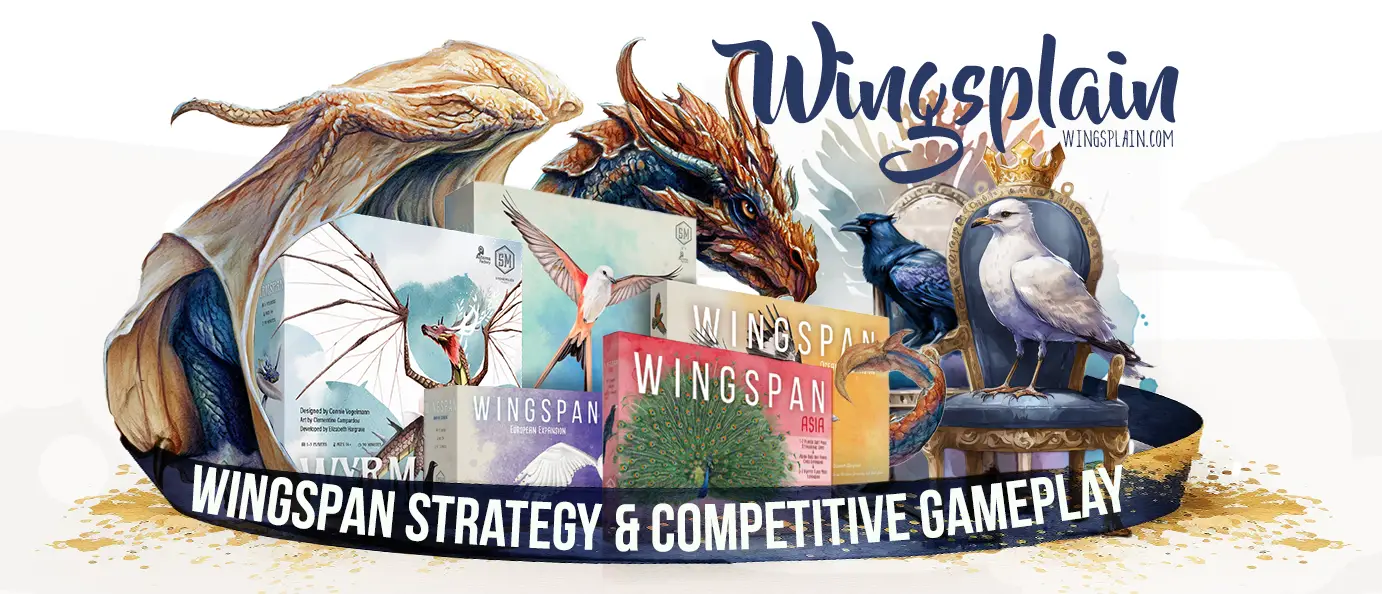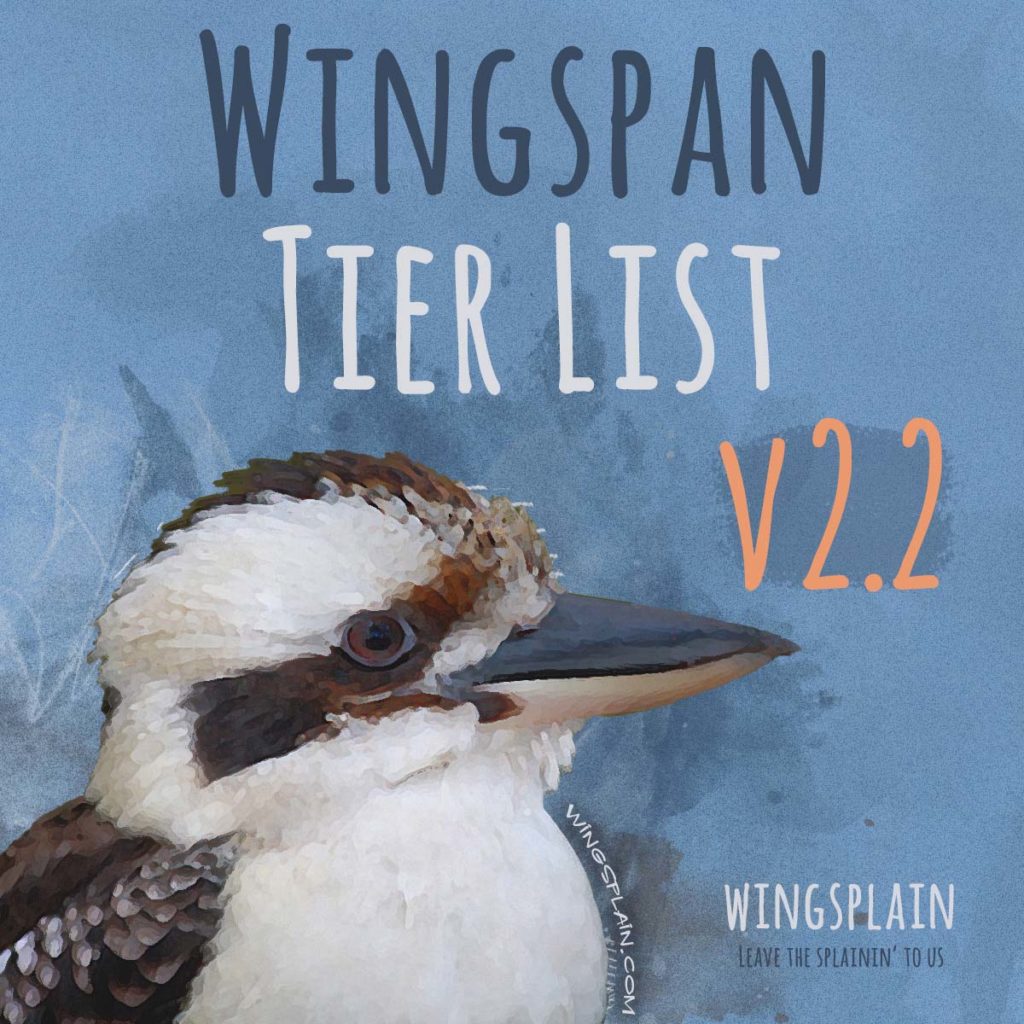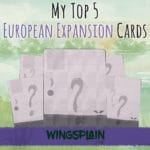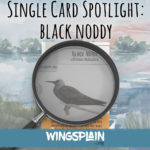Here’s what’s changed in the Wingspan Tier List Update for Version 2.2.
The complete tier list is available here: Wingsplain Card Tier List
American Avocet
UUT to T2
Mid-range point bomb that can passively generate a decent amount of eggs if played early. Requires companion birds with the appropriate nest type. Your opponents control this action. Having a nest is ideal. Passive egg laying is more valuable, and higher food costs are more easily mitigated in the Oceania Expansion metagame.
Barrow’s Goldeneye
UUT to T2
Mid-range point bomb that can passively generate a decent amount of eggs if played early. Requires companion birds with the appropriate nest type. Your opponents control this action. Having a nest is ideal. Of all the parasitic nesters, this has the largest nest at four eggs. Passive egg laying is more valuable, and higher food costs are more easily mitigated in the Oceania Expansion metagame.
Yellow-Billed Cuckoo
UUT to T2
Mid-range point bomb that can passively generate a decent amount of eggs if played early. Requires companion birds with the appropriate nest type; they can lay eggs in two different nest types. Your opponents control this action. Having a nest is ideal. Passive egg laying is more valuable, and higher food costs are more easily mitigated in the Oceania Expansion metagame.
Pileated Woodpecker
T2 to T1
Laying eggs from the Forest is a premium action in the Oceania Expansion metagame. Under ideal circumstances, you’re getting two eggs, and your opponents are getting zero. This could force your opponents to perhaps play a bird they wouldn’t otherwise play, just to take advantage.
Grasshopper Sparrow
T2 to T1
A cheap way to double or triple your early game egg production, depending on what mat you’re using. Similar to Chipping Sparrow in function, although it is restricted to the Grasslands.
Cassin’s Sparrow
T2 to T1
You can double or triple your early game egg production for a moderate cost, depending on what mat you’re using. This is a more expensive Grasshopper Sparrow that is worth one more point, and it picks up two more points from Historian.
Baird’s Sparrow
T2 to T1
You can double or triple your early game egg production for a moderate cost, depending on what mat you’re using. This is a more expensive Grasshopper Sparrow that is worth one more point, and it picks up two more points from Historian.
Chipping Sparrow
T1 to T0
Great early game accelerator. Laying eggs from the Forest is a premium action in the Oceania Expansion metagame.
Mourning Dove
T1 to T0
Great early game accelerator. Laying eggs from the Forest is a premium action in the Oceania Expansion metagame. It has the added versatility of being played in the Wetlands as well.
California Quail
T2 to T1
Laying eggs from the Forest is a premium action in the Oceania Expansion metagame. Higher food costs are more easily mitigated in this expansion.
Common Yellowthroat
T1 to T0
It’s cheap and represents some of the best card advantages in the game. From the first column of the wetlands, it lets you see three cards and keep two. It lets you look at four cards and keep three on the Oceania Expansion mat. It can make a decent egg bank with its four egg nest.
Ruddy Duck
T1 to T0
It’s cheap and represents some of the best card advantage in the game. From the first column of the wetlands, it lets you see three cards and keep two. It lets you look at four cards and keep three on the Oceania Expansion mat. It can make a decent egg bank with its five egg nest. Large nests are harder to take advantage of in the Oceania metagame.
Pied Billed Grebe
T1 to T0
It’s cheap and represents some of the best card advantage in the game. From the first column of the wetlands, it lets you see three cards and keep two. It lets you look at four cards and keep three on the Oceania Expansion mat. It can make a decent egg bank with its four egg nest.
Red-Breasted Merganser
T2 to T1
This bird represents some of the best card advantage in the game for a moderate cost. From the first column of the wetlands, it lets you see three cards and keep two. It lets you look at four cards and keep three on the Oceania Expansion mat. It can make a decent egg bank with its four egg nest. Its three-point value is gravy.
Wood Duck
T2 to T1
This bird represents some of the best card advantage in the game. It’s expensive at seed+seed+fruit, but this is more easily mitigated in the Oceania Expansion metagame. From the first column of the wetlands, it lets you see three cards and keep two. It lets you look at four cards and keep three on the Oceania Expansion mat.
It can make a decent egg bank with its four egg nest. Its four-point value is gravy. Unlike other birds of this archetype, it can leave the Wetlands and live up to its name by living in the Forest. Currently, this represents the most reliable form of card drawing from the Forest. Some people rate this bird higher than I do.
Audouin’s Gull
T1 to T0
This bird represents some of the best card advantage in the game for a moderate cost. From the first column of the wetlands, it lets you see three cards and keep two. It lets you look at four cards and keep three on the Oceania Expansion mat. The cards you have to get rid of are converted into points through tucking instead of being discarded, which is superior.
Common Starling
T1 to T2
With the Oceania Expansion, there is a wider variety of options to convert food into points. Most notably, columns one, three, four, and five in the Grasslands convert excess food into eggs. This lessens the impact of this archetype of bird. Eggs are the best resource, so converting food and cards into eggs is the preferred conversion option.
Common Swift
T1 to T2
With the Oceania Expansion, there is a wider variety of options to convert food into points. Most notably, columns one, three, four, and five in the Grasslands convert excess food into eggs. This lessens the impact of this archetype of bird. Eggs are the best resource, so converting food and cards into eggs is the preferred conversion option.
Crested Pigeon
T2 to UUT
It’s cheap, but it doesn’t do anything useful until game end. There are probably better uses of your action cubes in the early game than playing this bird. It’s limited in its ability to be a late-game point bomb. Any excess seeds you have could probably be more effectively converted into points through the Lay Eggs Action. It isn’t often that you’ve managed to stockpile eight seeds for game end, although this bird can take advantage of an opposing Galah.
Beware of Eurasian Jay and Black Headed Gull, which can steal your seeds. Also, Australian Zebra Finch lets your opponent tuck cards if you have a seed in your supply. For a card to be a good early/mid-game play, it either has to have an impactful power or good general qualities. This bird manages to make the cut as a food-efficient bird at three points and a four egg nest for the cost of a single seed. This would have been better as a five-point bird with a two-egg nest.
Double-Crested Cormorant
T2 to UUT
There is less effective fish support for this archetype than there is seed support, and its general qualities don’t save it.
American White Pelican
T2 to UUT
There is less effective fish support for this archetype than there is seed support, and its general qualities don’t save it.



